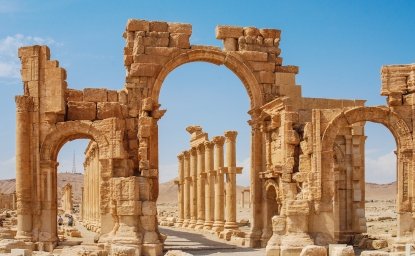The Orthodox Church and Russian Politics

“What is really the role of the Russian Orthodox Church in Russian federal politics?” asked Irina Papkova, Assistant Professor, Department of International Relations and European Studies, Central European University, former Title VIII-Supported Research Scholar, Kennan Institute, and author, The Orthodox Church and Russian Politics. The speaker discussed the findings of her research at a 14 November 2011 discussion, particularly focusing on the relationship between the Orthodox Church and the Russian federal government.
Papkova explained that several events of the late 1990s prompted analysts of Russian politics to believe that the Russian Orthodox Church was gaining increased influence over the federal government. For example, the passage of a 1997 national law, restricting certain religious organizations from carrying out missionary work in the Russian Federation, was considered a political victory for the Orthodox Church, whose leadership lobbied the government heavily for the legislation. Additionally, according to Papkova, “the presence of the Russian Orthodox Church was ubiquitous” starting in 1995. The speaker cited images of Orthodox priests blessing new buildings, military installations, and construction sites throughout Russia as examples of the Church’s presence in everyday life. The Patriarch also conferred his blessing on each new president, further highlighting the growing public presence of the Church.
The Church’s heightened visibility, however, proved to be deceptive; according to the speaker, with the exception of the 1997 law, the Church did not achieve many of its policy objectives on the federal level between 1997 and 2008. Papkova charted the political demands of the Russian Orthodox Church and discovered that the Church had two sets of interests, including its “staple list of demands from the state,” as well as various informal demands from factions within the Church. Since 1992, the Church had called for the restriction of other religious organizations competing with the Russian Orthodox Church on Russian territory; the introduction of Orthodox chaplains in the military; the restitution of Church property; and the introduction of an Orthodox component to the curriculum of public schools. The Church’s informal demands addressed moral issues, such as the banning of abortion.
And yet, Papkova noted, the state provide quite adept at ignoring these appeals. The central assumption behind the Church’s demands vis-à-vis the state was that the Russian Orthodox Church represented 80 percent of the population of the state, Papkova explained; therefore, it seemed logical for the government to consider the demands of the Church based on its overwhelming backing among the Russian people. The state essentially believed this line of reasoning through Yeltsin’s reelection in 1996, and this argument was a central factor in the passage of the 1997 law that favored the Church. However, after the elections in 1996, once analysts looked at the voting patterns, it became clear that religion had nothing to do with the population’s political tendencies. The 80 percent of the population that claimed to identify with Orthodoxy not only did not vote in line with what the Church sought politically, they also didn’t claim to identify with the ideology of the Church. The speaker cited that only approximately 10 percent of that demographic went to church regularly. Moreover, the actual concerns of Russian citizens did not match the broader political objectives of the Church, even if 80 percent of the population identified with the Church.
Such was the general situation in 2008, when Papkova published her book on the Orthodox Church and Russian politics. However, Papkova explained that the Church-state relationship had changed significantly over the past several years, with the election of president Dmitry Medvedev and the enthronement of Patriarch Kirill I. This change in leadership led to a growing recognition by the state of the Church’s demands. With respect to the Church’s “staple list of demands,” the leadership over the past few years managed to obtain the right to recover its property, thereby making the Patriarchate potentially the largest property owner in the Russian Federation. Additionally, the Church was granted authority to appoint military chaplains in the Russian Army, as well as to implement a modified version of Russian Orthodox education in public schools.
Indeed, three things the Russian Orthodox Church unsuccessfully lobbied for during the time period Papkova researched were granted to the Patriarchate within a year or two of the turnover in leadership in both the Church and the presidency. Papkova emphasized the changes at the top; Dmitry Medvedev is a somewhat more religious man than Vladimir Putin, and Patriarch Kirill I of the Orthodox Church is a much more forceful personality than his predecessor, Alexy II. The anticipated return of Putin to the Russian presidency will test whether the Church will be able to hold on to its political gains of the past few years, or if the balance between the two institutions will shift again.
Blair Ruble, Director, Kennan Institute
Author

Kennan Institute
After more than 50 years as a vital part of the Wilson Center legacy, the Kennan Institute has become an independent think tank. You can find the current website for the Kennan Institute at kennaninstitute.org. Please look for future announcements about partnership activities between the Wilson Center and the Kennan Institute at Wilson Center Press Room. The Kennan Institute is the premier US center for advanced research on Eurasia and the oldest and largest regional program at the Woodrow Wilson International Center for Scholars. The Kennan Institute is committed to improving American understanding of Russia, Ukraine, Central Asia, the South Caucasus, and the surrounding region through research and exchange. Read more




